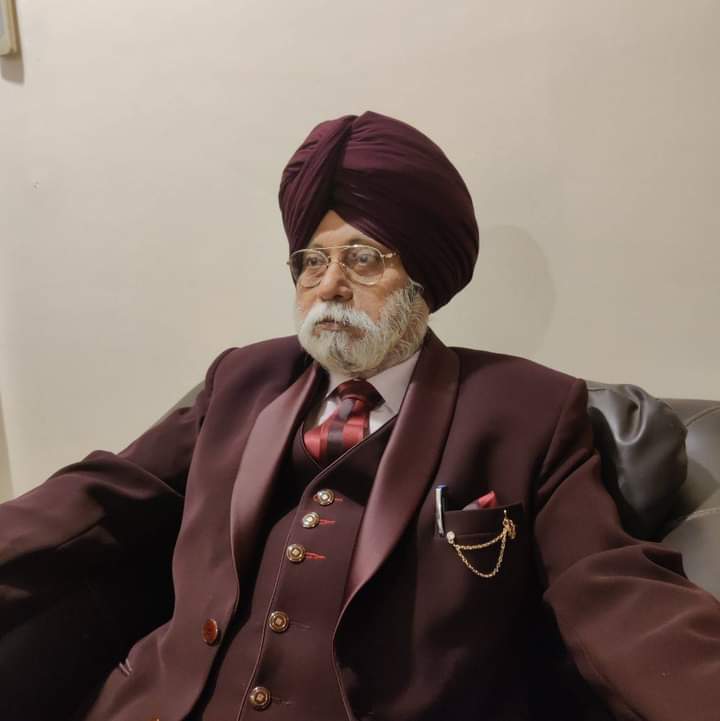“MANAGEMENT AND CAREER PSYCHOLOGY IN THE MODERN WORLD: PROBLEMS AND SOLUTIONS”
Urinova Robiyabonu
Student of Andijan branch of Kokan University
ANNOTATION
This article analyzes the current issues of management and career psychology in the modern world. Globalization, digitization, changes in the labor market and the demand for new competences have a significant impact on the management system. The methods of positive psychology and emotional intelligence are proposed as a solution to the problem.
Key words: career psychology, globalization, competencies, positive psychology, emotional intelligence.
ABSTRACT
This article analyzes current issues of management and career psychology in the modern world. Globalization, digitization, changes in the labor market and the demand for new competencies have a significant impact on the management system. Methods of positive psychology and emotional intelligence are offered as a solution to the problem.
Keywords : career psychology, globalization, competencies, positive psychology, emotional intelligence.
INTRODUCTION
Management psychology is the relationship between the manager and the employee, motivation,
studies the leadership style and the psychological environment within the community. Career psychology analyzes a person’s choice of profession, professional development, obstacles in work and motivational factors. In the current conditions, these two areas are closely related to each other, and the effect of one of them is directly related to the development of the other. The importance of studying this topic is that in many organizations, the lack of leadership skills, the motivation of employees decline, difficulties in adapting to digital technologies and uncertainty in choosing a career are encountered in everyday life as a practical problem. Analyzing the topic on a scientific basis allows us to offer real solutions to these problems.
MAIN PART
As a result of the rapid changes in the modern labor market and management technologies, attention to the human factor is becoming stronger. The correct use of the psychological approach in management processes not only increases employee efficiency, but also serves the sustainable development of the organization. At the same time, in today’s conditions, there are a number of problems related to management and career psychology, which are one of the most urgent aspects of this field. Unhealthy psychological environment in society. Hostile relations between employees it leads to hiding information from each other, transferring information in a changed form. Even information and its re-transmission can be found as a form of revenge. The personal quality of employees participating in the exchange of information. Weakness of memory. It was found that a subordinate employee remembers 50% of the given information, while the leader remembers 60%. Therefore, when receiving information, it is necessary to clarify, repeat and record it. [1, B.116]
In today’s organizations, managers are required not only to give orders, but also to think strategically, to inspire the team, to communicate, to make joint decisions, to manage the process of change. However, in many organizations, leaders do not have the emotional state, communicative culture, and the principles of modern leadership. This leads to tension, misunderstanding, and a decrease in motivation in the team. Analyzing issues related to the relevant mechanisms, it proves that a person’s stable social skills, values, life position and strategy are the main factors that cause management learning.
In order to increase the effectiveness of management, it is necessary to organize leadership development programs. Special trainings for leaders: courses such as “team management”, “conflictology”, “emotional state” should be established. Listening to the opinion of employees by leaders, creating an atmosphere of respect and trust ensures psychologically healthy management.
In many organizations, employees do not have complete information about their future position, growth opportunities, and evaluation criteria. The abstract nature of the career system causes instability, dissatisfaction, slowness in professional development, and a decrease in motivation among employees.
It is necessary to develop road maps that clearly regulate career development, job requirements and growth stages. It is necessary to regularly analyze the evaluation system.
The introduction of artificial intelligence, robotics, and automated systems creates psychological problems among employees, such as fear of technology, feeling useless, digital fatigue, and resistance to change.
It is necessary to introduce strong educational programs for increasing digital literacy in organizations. It is important to introduce new technologies step by step, to establish experience sharing processes. It should be consistently explained that the main task of technologies is to ease the work of the employee, not the employee. In the process of changes, listening to the opinion of employees increases the level of psychological adaptation. Motivation is one of the main psychological factors of the enterprise’s efficiency. In order to increase motivation, it is necessary to create internal incentive systems, a culture of positive communication, rewards for efficiency, a comfortable working environment and a healthy team communication system. Accepting the suggestions of employees, appreciating their opinions, and recognizing their successes will increase their self-confidence.
A social psychological experiment is a goal-oriented communication between the examiner and the subject for the purpose of studying social phenomena. The experimenter, that is, the examiner, creates special conditions for all communication to take place and collects facts based on a clear plan under these conditions. As in general psychology, there are different types of natural and laboratory experiments in social psychology. An example of a natural experiment is the research conducted by the Russian pedagogue A. Makarenko on team formation and organization. American psychologist M. Sherif investigated the phenomena related to intergroup relations in natural conditions based on a special plan. His main goal was to study the psychological reasons for the emergence of various conflicts in a temporarily organized community – summer vacation camps.
The laboratory experiment was usually conducted in special conditions, in special rooms, with the help of the necessary tools and equipment. For the first time, the Russian scientist Bekhterev conducted social psychological research in laboratory conditions. Using special tools, he studied the accuracy of perception, the quality of memory, the characteristics of observation, individually and in group conditions, and the presence of a group Proved that it directly affects the mental processes of the member.
The laboratory experiment was later carried out by B.G.Ananev, Ye.S. Kuzmin, V.S. Merlin, V.N. Myasishev, L.I. It was further improved by Umansky and others, and the apparatus method began to be widely used in social psychology. For example, the homeostat by F.D. Gorbov and M.A. Novikov, integrators for the group created by L.I. Umansky appeared and began to be widely used in the literature for the investigation of a group of phenomena. For example, the group homeostat checks whether the actions of the group members are compatible. is an arrow that can be turned in any direction, and the examiner watches the movement of each one. But they are given the following task: “You turn the arrow in such a way that your movement matches that of others, otherwise, because of your carelessness, the whole group will be punished.” experimentally proven. [3, B.45-46]
Such experiments show that when a common rhythm appears in the group, the participants begin to adapt to each other by themselves. Even if no one gives them specific instructions, people’s natural desire is not to deviate from the general flow and to adapt to the team. For a modern person, work is not just a source of income. Many people want to feel how useful they are in society. The motivation of a person who can find an answer to the question, “have I entered?”, is more stable. A meaningless job increases mental fatigue and dissatisfaction. On the contrary, an employee who works with a clear goal: distributes his energy correctly, can make long-term plans, manages the career path in a conscious manner. Another important psychological basis of management is trust. in the environment; the employee can freely express his opinion, has the courage to introduce new things, is not afraid of mistakes, does not force what the boss says, but understands it. The formation of trust is related to the honesty of the leader, stable decisions and adherence to justice.
CONCLUSION
In conclusion, I can say that in the modern world, management and career psychology is an important direction that ensures the development of organizations and employees, putting the human factor in the center. For effective management, the emotional intelligence of leaders, the ability to motivate and transformational leadership styles are of great importance. Such an approach makes teamwork effective, creates a positive psychological environment among employees and reduces stress. guarantees the stable and successful operation of the support organization.
REFERENCES
1 MANAGEMENT PSYCHOLOGY 2019: 1 (1), B, 116.
2 MANAGEMENT PSYCHOLOGY 2021: 2(2),B,53.
3 MANAGEMENT PSYCHOLOGY 2021:3(3),B 45-46.
4 THE PSYCHOLOGY OF AFFECT ROBERT CHALDINI.
5 FUNDAMENTALS OF MANAGEMENT PSYCHOLOGY.
6THE TALENT DELUSION.










